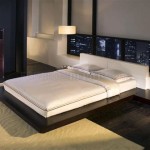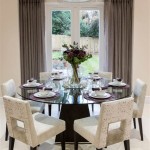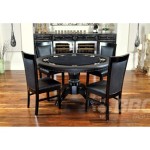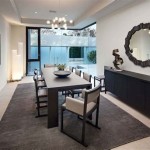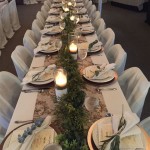The Enduring Appeal and Practicality of Wood Cribs and Changing Tables
The nursery is a fundamental space in a home anticipating or supporting a new child. Within this space, the crib and changing table represent two of the most crucial pieces of furniture. While various materials are available, wood remains a consistently popular choice for both cribs and changing tables, owing to its perceived aesthetic qualities, durability, and potential for contributing to a healthier nursery environment. Understanding the attributes of wood cribs and changing tables, the considerations involved in selecting them, and the maintenance they require is essential for parents aiming to create a safe and functional nursery.
The appeal of wood as a material for baby furniture extends beyond mere aesthetics. Wood can evoke a sense of warmth and naturalness, contributing to a calming atmosphere within the nursery. Furthermore, wood furniture often aligns with a preference for sustainable and eco-friendly products, particularly when crafted from responsibly sourced timber and finished with non-toxic materials. The inherent strength of wood also translates into durable and long-lasting furniture, providing value over an extended period.
Durability and Longevity of Wood Cribs and Changing Tables
One of the primary advantages of wood cribs and changing tables is their durability. Solid wood construction, in particular, provides a robust and stable platform for both the crib and the changing table. Unlike furniture made from particleboard or MDF (Medium-Density Fiberboard), solid wood is less susceptible to damage from moisture, impacts, and general wear and tear. This translates to a longer lifespan for the furniture, making it a worthwhile investment for families planning to have multiple children or those who intend to resell the furniture at a later date.
The joinery and construction techniques employed in creating wood cribs and changing tables further contribute to their durability. Dovetail joints, mortise and tenon joints, and other traditional woodworking methods create strong and secure connections between the different components of the furniture. These robust joints ensure that the crib remains sturdy and stable, even with the constant movement and activity of a growing infant. Similarly, well-constructed changing tables can withstand the weight of the baby and the supplies stored within them, without compromising their structural integrity.
The inherent strength of wood also allows for the crib and changing table to be refinished or repaired if necessary. Dents, scratches, or other minor damages can often be repaired using wood fillers, sanding, and refinishing techniques. This extends the usability of the furniture and prevents the need for premature replacement, which contributes to reducing waste and promoting sustainability. In contrast, furniture made from composite materials is often more difficult or impossible to repair, leading to its eventual disposal.
Furthermore, some wood types, such as hardwoods like maple, oak, and cherry, are naturally resistant to scratches and dents. While these hardwoods may be more expensive initially, their increased durability can offset the cost over the long term. Softwoods like pine are also used in crib and changing table construction, although they may be more prone to cosmetic damage. The choice of wood type should be carefully considered based on the desired aesthetic, budget, and anticipated usage.
Safety Considerations for Wood Cribs and Changing Tables
Safety is paramount when selecting any furniture for a baby's nursery, and wood cribs and changing tables are no exception. Adherence to safety standards is crucial to ensuring the well-being of the child. In the United States, cribs must meet the safety standards set by the Consumer Product Safety Commission (CPSC). These standards address issues such as slat spacing, mattress support, and the overall structural integrity of the crib. Parents should verify that any crib they purchase is certified to meet these standards.
The finish applied to wood cribs and changing tables is another important safety consideration. Traditional paints and varnishes may contain volatile organic compounds (VOCs), which can be harmful to infants. Parents should prioritize furniture finished with non-toxic, water-based paints or stains that are low in VOCs. These finishes are designed to minimize off-gassing and reduce the risk of respiratory irritation or other health problems for the baby.
Proper assembly and maintenance are also crucial for ensuring the safety of wood cribs and changing tables. All screws, bolts, and other fasteners should be tightened securely and checked regularly to prevent loosening or detachment. Cribs should be assembled according to the manufacturer's instructions, and the mattress should fit snugly within the crib frame to prevent gaps that could pose a hazard. Changing tables should be placed on a level surface and equipped with safety straps to prevent the baby from rolling off.
Regular inspection of the crib and changing table is essential to identify any potential safety hazards. Look for splinters, cracks, or loose hardware that could pose a risk to the baby. Any damaged components should be repaired or replaced immediately. Additionally, it is important to ensure that the crib is free of soft bedding, pillows, and toys, which can increase the risk of suffocation. Safe sleep practices should be followed at all times to minimize the risk of Sudden Infant Death Syndrome (SIDS).
The height of the changing table is another safety factor to consider. The changing table should be at a comfortable height for the caregiver to prevent back strain. It should also be sturdy and stable, with ample storage space for diapers, wipes, and other supplies. Organizing supplies within easy reach can help prevent the caregiver from needing to leave the baby unattended on the changing table.
Aesthetic Versatility and Design Options for Wood Furniture
Wood offers a wide range of aesthetic possibilities, making it a versatile choice for nursery furniture. The natural grain patterns and color variations of different wood species can create a unique and visually appealing look. From the warmth of cherry wood to the clean lines of maple, there is a wood type to suit virtually any style and design preference. The ability to stain or paint wood further expands the design options, allowing parents to customize the furniture to match their nursery décor.
Wood cribs and changing tables are available in a variety of styles, ranging from traditional to contemporary. Traditional cribs often feature ornate carvings, turned posts, and other decorative details. Contemporary cribs, on the other hand, tend to have sleek, minimalist designs with clean lines and geometric shapes. The choice of style will depend on the overall aesthetic of the nursery and the personal preferences of the parents.
The finish applied to wood furniture can also significantly impact its aesthetic. A natural finish allows the beauty of the wood grain to shine through, creating a warm and inviting look. Painted finishes, on the other hand, can add a pop of color and create a more playful or whimsical atmosphere. The choice of finish should complement the overall color scheme and style of the nursery.
Wood can also be combined with other materials to create unique and interesting designs. For example, a crib with wood slats and metal accents can create a modern and industrial look. A changing table with a wood frame and a marble or granite countertop can add a touch of elegance and luxury. Experimenting with different material combinations can help create a nursery that is both stylish and functional.
The versatility of wood extends beyond the crib and changing table. Other nursery furniture, such as dressers, rocking chairs, and bookshelves, can also be made from wood to create a cohesive and harmonious look. By coordinating the materials and finishes of all the furniture in the nursery, parents can create a space that is both beautiful and functional.
In summary, wood cribs and changing tables represent a practical and aesthetically pleasing choice for parents setting up a nursery. Their durability, safety features when properly selected and maintained, and design versatility make them a lasting investment for a growing family. While other materials may offer specific advantages, the enduring appeal of wood ensures its continued prominence in the realm of baby furniture.

Baby Relax Ema 3 In 1 Convertible Crib Changer Combo Walnut

Dream On Me Jayden 4 In 1 Mini Convertible Crib And Changer Natural

Storkcraft Espresso Tuscany Convertible Crib Aspen Changing Table 2 Piece Nursery Set Free Shipping

Retro Crib Dresser And Changing Tray Nursery Set Simply

Retro Crib 3 Drawer Dresser And Changing Tray Nursery Set In Hazelnut

Dream On Me Brody 5 In 1 Convertible Crib With Changer Cherry

Ggumbi All Star Wood Baby Crib Full Set Mattress Cushion Guard 3p Water Proof Pad Diaper Changing Table

Crib With Attached Changing Table Cherry Natural Ebay

Princeton Elite Panel Crib Changer In Espresso Sorelle Furniture

Storkcraft Black Vittoria 3 In 1 Convertible Crib And Aspen Changing Table With Drawer 2 Piece Nursery Set Free Shipping


